1.
Introduction
Population dynamic models with age structure have a long history from articles of Lotka [16] in 1907 and Sharp and Lotka [24] in 1911. The first nonlinear age-structured model was proposed by Gurtin and MacCamy [18] in 1974. The theory of traveling wave solutions of reaction-diffusion systems has attracted much attention due to its significant nature in biology, chemistry, epidemiology and physics. Ducrot and Magal [3] researched the existence of traveling wave solutions for infection-age structured model with local diffusion by the methods of upper-lower solutions and Schauder's fixed point theorem. More recently, the traveling wave solutions of age-structured models received a lot of interest in the literature and we refer to [3,4,5,26,29] for more results about this topic.
The article is devoted to the study of traveling wave solutions of the nonlocal dispersal SIRS epidemic model with age structure
where (t,a,x)∈D≜R+×(0,A]×Rand
S(t,x) and R(t,x) represent the densities of susceptible and removed individuals located at time t and position x and i(t,a,x) represents the density of infected individuals located at time t and location x with age a. And a⩾0 is the time since individuals were infected. Based on the actual situation, we assume that the age of infection is a constant. A∈(0,+∞) means the maximum age of infection. Therefore, we assume that the maximum infection age A is a sufficiently large constant and i(t,A,x)=0 throughout this paper. The parameter d>0 represents the diffusion rate of individuals. The function β(a) denotes the infection age-specific transmission rate. γ>0 is the recovery rate of the infected individuals and δ>0 is the loss of immunity rate. Since there are no birth or death rates in this model, N(t,x)=S(t,x)+∫A0i(t,a,x)da+R(t,x) is a constant for all t⩾0. Therefore, we assume that the initial value of (1.1) is S(0,x)+∫A0i(0,a,x)da+R(0,x)=S0. And in this whole paper we assume δ>γ and we mainly apply this assumption in Lemma 3.3. Moreover, J(x−y) denotes the probability of jumping from position y to position x and J∗S(t,x) denotes the total number of susceptible individuals located at time t, moving from the whole space to position x. In this paper, we give the following assumptions.
(A1) J∈C1(R), J(x)=J(−x)≥0, ∫RJ(x)dx=1 and J is compactly supported.
(A2) The map a→β(a) is almost everywhere bounded and belongs to L∞(0,A].
Kermack and McKendrick [14] first proposed a compartmental model to describe the spread of infectious diseases in 1927. Since then, the SIR epidemic model and its various adaptations have been widely studied in pathology[22,26,30,32,34]. In epidemiology, traveling wave solutions have attracted a great deal of attention, which denote propagation through space at a constant velocity. In order to control and prevent diseases, it is crucial to determine whether traveling wave solutions exist. Therefore, many studies utilize spatially and temporally correlated models to investigate the existence of traveling wave solutions[15,21,29,31,33].
Hosono and Ilyas [7] investigated the reaction-diffusion equation with the nonlinear reaction term. They verified the existence of a noncritical traveling wave solution. However, it is worth mentioning that the model involves the classical Laplacian diffusion in [7], which is also called the local diffusion. The local diffusion denotes that a population at position x will only be affected by variations in the population near position x, which is deficient in describing diffusion[1,6,10,12,17,21]. To overcome the limitations of diffusion of individuals, the Laplacian operator can be replaced by the nonlocal diffusion J∗u−u. Traveling wave solutions of infectious disease models with nonlocal diffusion terms have drawn great attention in recent years. For example, Yang et al. [33] studied the existence and nonexistence of traveling wave solutions in a Kermack-McKendrick epidemic model with nonlocal diffusion. They established a non-empty closed convex cone on a bounded closed interval and constructed appropriate upper and lower solutions and then obtained a nonlinear operator of an ordinary differential system. By applying Schauder's fixed point theorem, they proved the existence of nontrivial traveling wave solutions. Furthermore, Yang et al. [31,32] also investigated the traveling wave solutions of the SIR epidemic model with critical wave speed. After that, Ma and Yuan [17] studied the traveling wave solutions of the nonlocal dispersal SIRS model with spatio-temporal delay. Qiao et al. [21] researched the traveling wave solutions of the nonlocal dispersal SEIR model with standard incidence.
In addition, age is one of the important features in describing epidemics due to the fact that individuals of different ages may have different survivability and behaviors in their natural conditions. For example, hand-foot-mouth disease, chickenpox, measles, and influenza are all susceptible to occur in childhood. Novel coronavirus infections are universally susceptible to the population and can occur in all age groups, but are less common in children under three years of age. The disease is mainly concentrated in older people over the age of sixty-five and the virus is easily exacerbated. Therefore, age structure is a significant factor in studying the epidemic patterns of infectious diseases. In recent years, lots of age-structure models have been proposed in the epidemic spread (see [2,8,9,13,19,20,29]). For instance, Ducrot et al. [5] studied the existence of traveling wave solutions for multigroup age-structure models. At the same time, Ducrot and Magal [3] researched the existence of traveling wave solutions for the infection-age structured model with diffusion. In addition, Ducrot and Magal [4] also proposed the SI infectious disease model with external supplies and age structure. And age is the time since the individuals were infected. They proved the existence of traveling wave solutions by constructing suitable upper and lower solutions and applying Schauder's fixed point theorem. Meanwhile, they studied the convergence behavior at positive infinity by constructing a suitable Lyapunov functional. In addition, Tian and Guo [26] obtained the existence of traveling wave solutions of nonlocal dispersal Fisher-KPP model with age structure. In recent years, Kang and Ruan [11] have proposed an age-structure SIS infectious disease model with nonlocal diffusion
with
where a≥0, t≥0, x∈Ω⊂RN and the nonlocal operator L is defined by
And μ(a,x) and γ(a,x) represent the mortality and recovery rates, respectively, for individuals of age a at location x. λ(t,a,x) is the infectivity of infected individuals to susceptible individuals of age a at time t in position x. β(a,x,y) indicates the birth rate of individuals of age a on position y giving birth to newborns at position x. They prove the existence of traveling wave solutions by constructing upper and lower solutions in [11]. We can refer to [15,22,23,25,28,34] for the relevant conclusions on the research of traveling wave solutions for many infectious disease models. As far as we know, there are few researches on the traveling wave solutions of epidemic models with age structure [4,29].
This paper is structured as follows. In Section 2, we give some key preliminaries of this paper. Then, we establish the existence of traveling wave solutions for c>c∗ in Section 3. Section 4 obtains the nonexistence of traveling wave solutions for 0<c<c∗ by using the Laplace transform. We draw the conclusions in Section 5.
2.
Preliminaries
In this section, we present some preliminaries and the characteristic equation.
Let N(t,x)=S(t,x)+∫A0i(t,a,x)da+R(t,x). The system (1.1) can be rewritten as the following system:
The homogeneous system for (2.1) always exists a disease-free equilibrium (S0,0,0), where S0 denotes the density of susceptible individuals at the start of the infection. In addition, if the basic reproduction number R0=S0∫A0β(a)e−γada>1, the homogeneous system for (2.1) exists a unique endemic equilibrium (S0,i∗(a),R∗), where
Our purpose in this paper is to discuss the traveling wave solutions connecting the disease-free equilibrium and the endemic equilibrium. More precisely, we aim to study the traveling wave solutions of system (2.1) with the form
where the parameter c>0 indicates the wave speed. Substituting (2.2) into (2.1) and replacing ˆN, ˆi, ˆR with N, i, R, we deduce the following system:
Thus, the solution of system (2.3) connecting (S0,0,0) and (S0,i∗(a),R∗) is a special solution, which satisfies the asymptotic boundary conditions
We intend to obtain the existence of traveling waves of system (2.1), which satisfies N(±∞)=S0. Since N(z) is a constant, system (2.3) can be simplified by removing the first equation to the following system:
which satisfies the asymptotic boundary conditions
Assume that R0=S0∫A0β(a)e−γada>1. By linearizing the third equation of system (2.5) around the disease-free equilibrium (0, 0) and letting i(a,z)=eλzϕ(a), we can obtain the characteristic equation as follows:
where g(λ,c)=d(∫RJ(x)eλxdx−1)−γ−cλ and the function ϕ satisfies ϕ′(a)=g(λ,c)ϕ(a). Notice that
In order to construct R+(z), we consider the following function and study its properties:
where M is a positive constant to be determined and M can be taken to be e(λ1−λ3)z3 in Lemma 3.3. And λ1,λ3 can be seen in Lemma 2.1 and z3 can be obtained from R+(z). Notice that
Based on (2.8) and (2.9), we can obtain the following lemma.
Lemma 2.1. If R0=S0∫A0β(a)e−γada>1, then there exist positive constants c∗i and λ∗i such that
Furthermore,
(i) ● when c∈(0,c∗1), it is known that F1(λ,c)>0 holds for all λ≥0;
● when c>c∗1, F1(λ,c)=0 has two positive roots λ1(c) and λ2(c) satisfying
In addition, when c>c∗1, F1(λ,c) is less than zero in λ∈(λ1(c),λ2(c)) and greater than zero beyond [λ1(c),λ2(c)].
(ii) ● When c∈(0,c∗2), it is known that F2(λ,c)>0 holds for all λ≥0;
● when c>c∗2, F2(λ,c)=0 has two positive roots λ3(c) and λ4(c) satisfying
In addition, when c>c∗2, F2(λ,c) is less than zero in λ∈(λ3(c),λ4(c)) and greater than zero beyond [λ3(c),λ4(c)].
Remark 2.1. When δ=0 and γ=0, we obtain c∗2=0, λ3=0. Therefore, we get c∗2<c∗1 and λ3<λ1 by choosing δ and γ small enough. Taking c∗=c∗1, we consider c∗ as the critical wave speed in this paper.
Remark 2.2. The function ϕ(a) satisfies the equation ϕ′(a)=g(λ,c)ϕ(a) for c>c∗. In the process of deriving the characteristic equation, it can be obtained that ϕ(0)=S0∫+∞0β(a)ϕ(a)da.
3.
Existence of traveling wave solutions with c>c∗
In this section, we assume c>c∗ and give the definitions of the upper solution and lower solution. To construct the suitable upper and lower solutions, we assume that δ and γ are small enough throughout this paper (see Remark 2.1 and (3.3)). Then, the existence of traveling wave solutions is proved by using Schauder's fixed point theorem.
Definition 3.1. A pair of the continuous functions Φ+=(i+(a,z),R+(z)) and Φ−=(i−(a,z),R−(z)) are called the upper solution and lower solution of system (2.5), if there exists a finite set S={Zi∈R:i=1,2,...,m} such that Φ′+,Φ′− exist and are bounded for z∈RnS, and satisfy
and
for z∈RnS, respectively.
Let ε>0 be small enough and ε1=ε+ε2. Next, we define two continuous functions Φ+=(i+(a,z),R+(z)) and Φ−=(i−(a,z),R−(z)) as follows:
where z1,z3>0, z2<z4<0 and λ>0 is a small enough constant.
Remark 3.1. By the expressions for i−(a,z) and R−(z), it follows that z2=−1λlnR∗ε−1λlnδe−γa(1+ε)ϕ(a) and z4=−1λlnR∗ε. And it is easy to hold that z2<z4, e.g., when γ=1A, where A is a sufficiently large constant.
Lemma 3.1. The function i+(a,z) satisfies
for z≠z1.
Proof. For the first equation of system (3.4), when z<z1, i+(a,z)=eλ1zϕ(a). Thus, we just need to prove
It is sufficient to prove
Recalling Remark 2.2, the above inequality holds.
When z>z1, i+(a,z)=i∗(a)+ε1e−λzϕ(a), we need to prove
It is enough to verify
That is to say,
When λ>0 is small enough, (3.5) is established.
For the second equation of the system (3.4), when z<z1, i+(a,z)=eλ1zϕ(a). Therefore, it is sufficient to demonstrate
Recalling Remark 2.2, inequality (3.6) holds.
When z>z1, i+(a,z)=i∗(a)+ε1e−λzϕ(a). We need to show
Due to ϕ(0)=S0∫A0β(a)ϕ(a)da and i∗(0)>(S0−∫A0i+(a,z)da−R−(z))∫A0β(a)i∗(a)da, it is evident that (3.7) is true. □
Lemma 3.2. The function i−(a,z) satisfies
for z≠z2.
Proof. For the first equation of system (3.8), when z<z2, i−(a,z)=0. Therefore, it is obviously true.
When z>z2, i−(a,z)=i∗(a)−ε1e−λzϕ(a). We need to show
(3.9) can be simplified to
That is to say,
When λ>0 is small enough, (3.10) holds.
For the second equation of system (3.8), when z<z2, i−(a,z)=0. It is clearly true.
When z>z2, i−(a,z)=i∗(a)−ε1e−λzϕ(a). We need to show
Next, we need to discuss the two cases of R+(z) in (3.11).
When z2<z<z3, R+(z)=R∗eλ3z. It is sufficient to ensure that
(3.12) can be simplified to
Under the conditions that
and
the inequality (3.13) holds. In addition, (3.14) is equal to
We can choose ϕ(0)=g(λ1)eg(λ1)A−1 and ε1 small enough to guarantee (3.15) and (3.16) hold.
When z>z3, R+(z)=R∗+εe−λz. It is to prove that
(3.17) can be simplified to
Due to ϕ(0)=g(λ1)eg(λ1)A−1, then (1+ε)∫A0ϕ(a)da⩾1 holds. Since ε1 is small enough, then
is true. Therefore, (3.17) holds.
□
Lemma 3.3. The function R+(z) satisfies
for z≠z3.
Proof. When z<z3, R+(z)=R∗eλ3z. It is necessary to demonstrate
That is to say, we only need to prove this simplified expression as follows:
At this point, (3.21) can be organized in the following inequalities:
Since F2(λ3,c)=0, we need to demonstrate
Next, we will consider different cases for i+(a,z).
If z<z1, then i+(a,z)=eλ1zϕ(a). Noticing that ∫A0ϕ(a)da=1, we can choose M=e(λ1−λ3)z3 to ensure that (3.22) holds.
If z>z1, then i+(a,z)=i∗(a)+ε1e−λzϕ(a). We just need to verify
Simplifying (3.23), we obtain
Since λ3<λ1 and z1<z<z3, it follows that the left side of (3.24) is greater than 1. When ε1>0 is sufficiently small, ε1e−λz1 tends to zero. By taking S0⩽1 so that ∫A0i∗(a)da⩽1, we have that (3.24) holds.
When z>z3, R+(z)=R∗+εe−λz, i+(a,z)⩽i∗(a)+ε1e−λ(z∨z1)ϕ(a), where z∨z1:=max{z,z1}. It is to prove that
Due to
then there exists δ1>0, for any λ∈(0,δ1),
Thus, (3.25) can be simplified to
We can choose η1=δ−γ(1+ε), then (3.25) holds. □
Lemma 3.4. The function R−(z) satisfies
for z≠z4.
Proof. When z<z4, R−(z)=0. Thus, it is obviously true.
When z>z4, R−(z)=R∗−εe−λz. We need to show
Since z2<z4 when A is sufficiently large, (3.29) reduces to
Due to
then there exists δ1>0, for any λ∈(0,δ1),
We choose
then (3.29) holds true. □
For any b>0, define the bounded closed convex set
Next, we study the operator T:Cb→C([−b,b]) given by
where i is the solution of the problem
while R is the solution of the problem
Therefore, the existence of solutions to systems (3.33) and (3.34) can be converted to the existence of a fixed point for the operator T.
Now, we can present the main result of the existence of traveling waves in this section.
Theorem 3.1. (Existence of traveling waves) We assume that R0>1, for any c>c∗, system (2.5) has a solution that connect the disease-free equilibrium E0 and the endemic equilibrium E∗.
Proof. From the definition of Cb, it can be shown that Cb is closed, convex and bounded. Moreover, by the similar argument in [17], we have operator T is completely continuous and T(Cb)⊂Cb. Using the Schauder's fixed theorem, T has a fixed point i0. Let (ib(a,z),Rb(z))(z∈(−b,b)) be the solution of systems (3.33) and (3.34) for any fixed b>0. To obtain the existence of traveling wave solutions in R, we choose an increasing sequence {bn}+∞n=1 such that bn>max{z1,z3} and limn→+∞bn=+∞. By similar arguments in [3, Section 4.4] and [4, Proposition 2.5], for the sequence (ibn,Rbn), we can extract a subsequence by a standard diagonal extract argument, denoted by {ibnk}k∈N, {Rbnk}k∈N, which tend towards functions (i,R) in the following topologies ibnk→i and Rbnk→R as k→+∞ uniformly on every bounded closed interval and pointwise on R for any given a>0. Due to the fact that J is compactly supported, applying the Lebesgue dominated convergence theorem, we obtain the following results:
and
for any z∈R. Therefore, we have that i(a,z) and R(z) satisfy system (2.5). Note the fact that
and
we obtain
Thus, (i(a,z),R(z)) satisfies the asymptotic boundary conditions (2.6). The proof is completed. □
4.
Nonexistence of traveling waves with c∈(0,c∗)
In this section, we mainly focus on the nonexistence of traveling waves when 0<c<c∗ with R0>1 by using the Laplace transform.
Theorem 4.1. (Nonexistence of traveling waves) Assume that R0>1, for any speed c∈(0,c∗), there exist no nontrivial traveling wave solutions (i(a,z),R(z)) of system (2.5) satisfying (2.6).
Proof. By contradiction, we assume that there exists a nontrivial traveling wave solution (i(a,z),R(z)) of system (2.5) that satisfies
Due to R0=S0∫A0β(a)e−γada>1 and (i,R)(−∞)=(0,0), there exists ˆz<0 such that S0−I(z)−R(z)>S02+12∫A0β(a)e−γada for any z<ˆz, where I(z)=∫A0i(a,z)da. Integrating the first equation of (2.5) with respect to a from 0 to A, we have
where β1=infa∈(0,A]β(a). For any z<ˆz, let H(z)=∫z−∞I(s)ds. Integrating two sides of inequality (4.1) from −∞ to z, we obtain
By applying Fubini theorem, it holds that
Substituting (4.3) into (4.2), we get
Thanks to
we have J∗H(z)−H(z) is integrable on (−∞,z] for any z∈R. From Eq (4.4), we obtain that H(z) is integrable on (−∞,z] for any z∈R. Then integrating both sides of inequality (4.4) from −∞ to z with z⩽ˆz, we have
Due to xH(z−θx) is non-increasing for θ∈[0,1] with any fixed z∈R. We obtain
By the property that J is an even function, we have ∫+∞−∞xJ(x)dx=0 holds. Thus, for any z⩽ˆz, one gets
Since H(z) is increasing with respect to z, there exists some τ>0 such that
Hence, there exists a constant τ0>0 large enough and some ν∈(0,1) such that H(z−τ0)⩽νH(z) for each z⩽ˆz. Set Q(x)=H(x)e−μ1x and μ1=1τ0ln1ν, then
Therefore, there exists Q0>0 such that Q(z)⩽Q0 for any z⩽ˆz, which implies
It is noticed that
then there exists P1>0, such that I(z)⩽P1eμ1z for any z⩽ˆz. Due to I(z) is bounded, it is possible to obtain
By the same process, we have
According to (4.5) and (4.6), it can be obtained that
and
where μ0=min{μ1,μ2}. Therefore, we obtain
Next, we define
and a two-sided Laplace transform of I(⋅) by
and a two-sided Laplace transform of ˜I(⋅) by
for λ∈C with 0<Reλ<μ0.
Then, in view of
and
we have
By the property of the Laplace transform (see[27]), it follows that either there exists a real number ˆλ such that LI(λ) and L˜I(λ) are analytic for λ∈C with 0<Reλ<ˆλ and λ=ˆλ is singular point of LI(λ) and L˜I(λ), or LI(λ) and L˜I(λ) are well defined for λ∈C with Reλ>0. Indeed, motivated by Zhou, Xu, Wei et al. [35, Section 3], we can obtain that the right-hand side of Eq (4.9) is well defined for λ∈C with 0<Reλ<2μ0 according to (4.7). One can obtain that LI(λ) and L˜I(λ) are well defined with Reλ>0. Nevertheless, (4.9) can be rewritten as
It is evident from the definition of g(λ,c) and Lemma 2.1 that g(λ,c)→+∞ as λ→+∞. This is a contradiction to Eq (4.10) and we complete the proof. □
5.
Conclusions
In this paper, we propose and consider a nonlocal dispersal SIRS infectious disease model with age structure that has practical significance. Due to the consideration of age structure, the investigation of traveling wave problem becomes more complicated. In addition, the epidemic system is non-monotone such that the theory for monotone semiflow can not be applied. To overcome these difficulties, we obtain the existence of traveling wave solutions by constructing appropriate upper and lower solutions and applying Schauder fixed point theorem. In fact, the solution of system (2.5) can be derived when the basic reproduction number R0>1 and the wave speed c>c∗. That is to say, infectious diseases can spread among populations when R0>1 and c>c∗. Furthermore, we prove the nonexistence of traveling wave solutions when 0<c<c∗ with R0>1 by using the Laplace transform.
Use of AI tools declaration
The authors declare they have not used Artificial Intelligence (AI) tools in the creation of this article.
Acknowledgments
The authors would like to thank the anonymous referees for their careful reading and valuable comments. This work is supported by the National Natural Science Foundation of China (Grant No. 12001502) and the 2023 Graduate Innovation Fund Project of China University of Geosciences, Beijing (Grant No. YB2023YC007).
Conflict of interest
All authors declare no conflict of interest that could affect the publication of this paper.












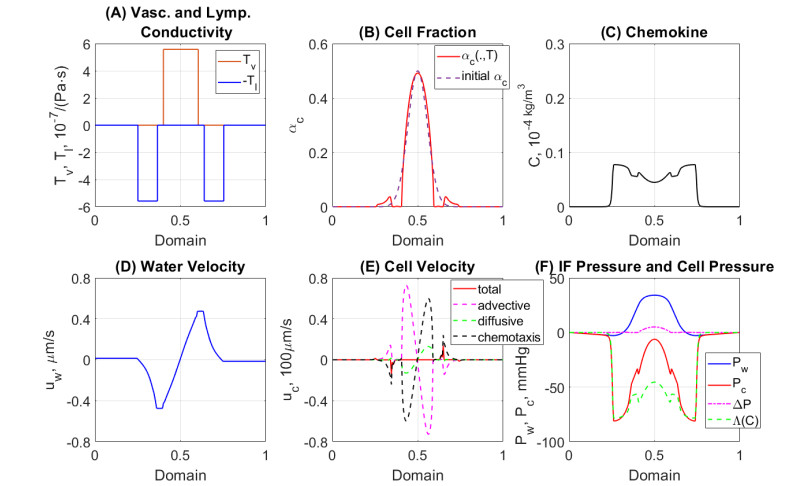
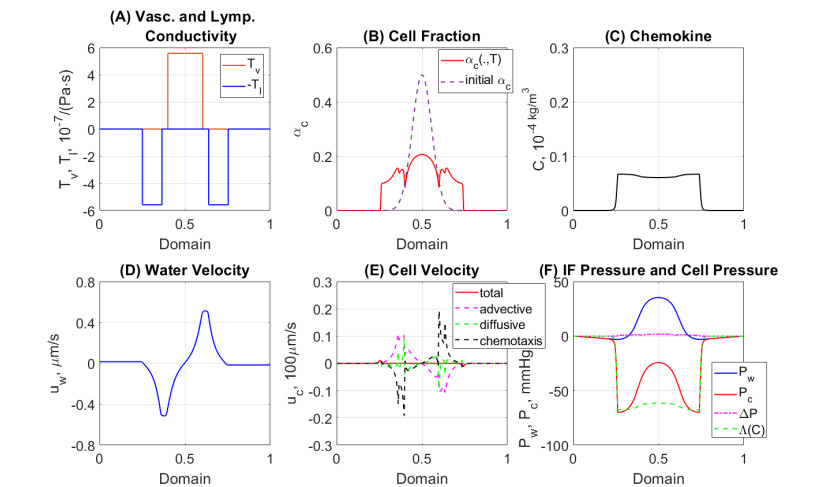
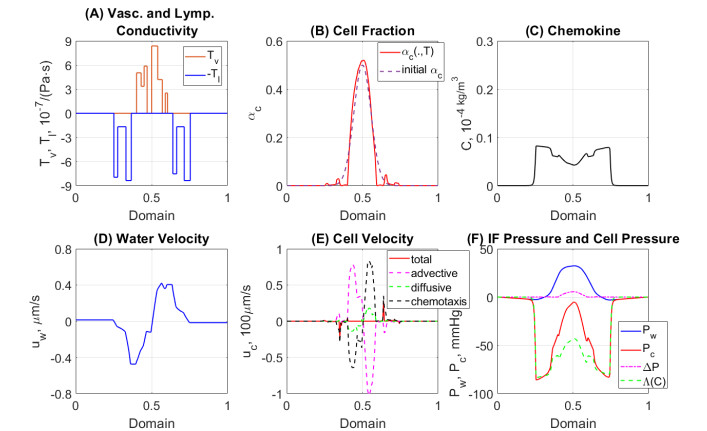
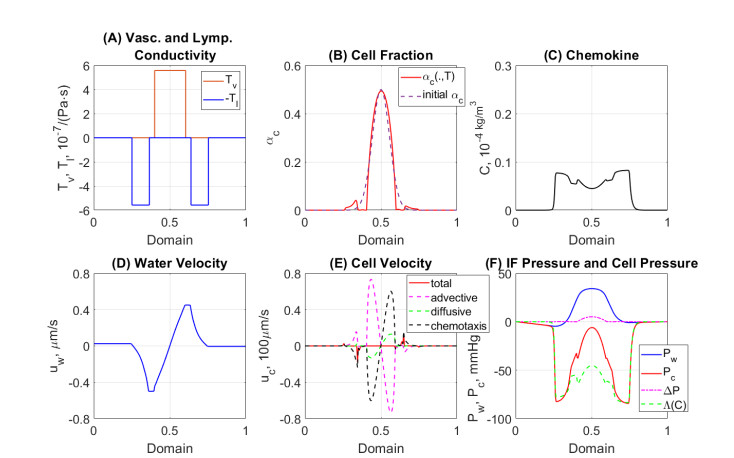
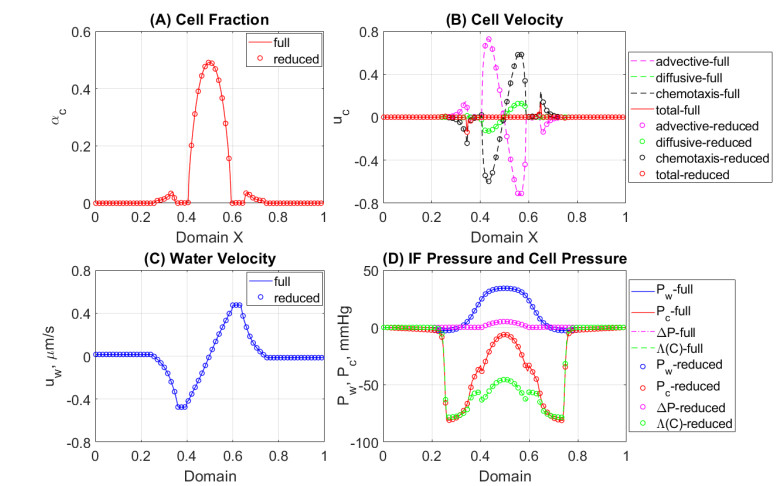



 DownLoad:
DownLoad: